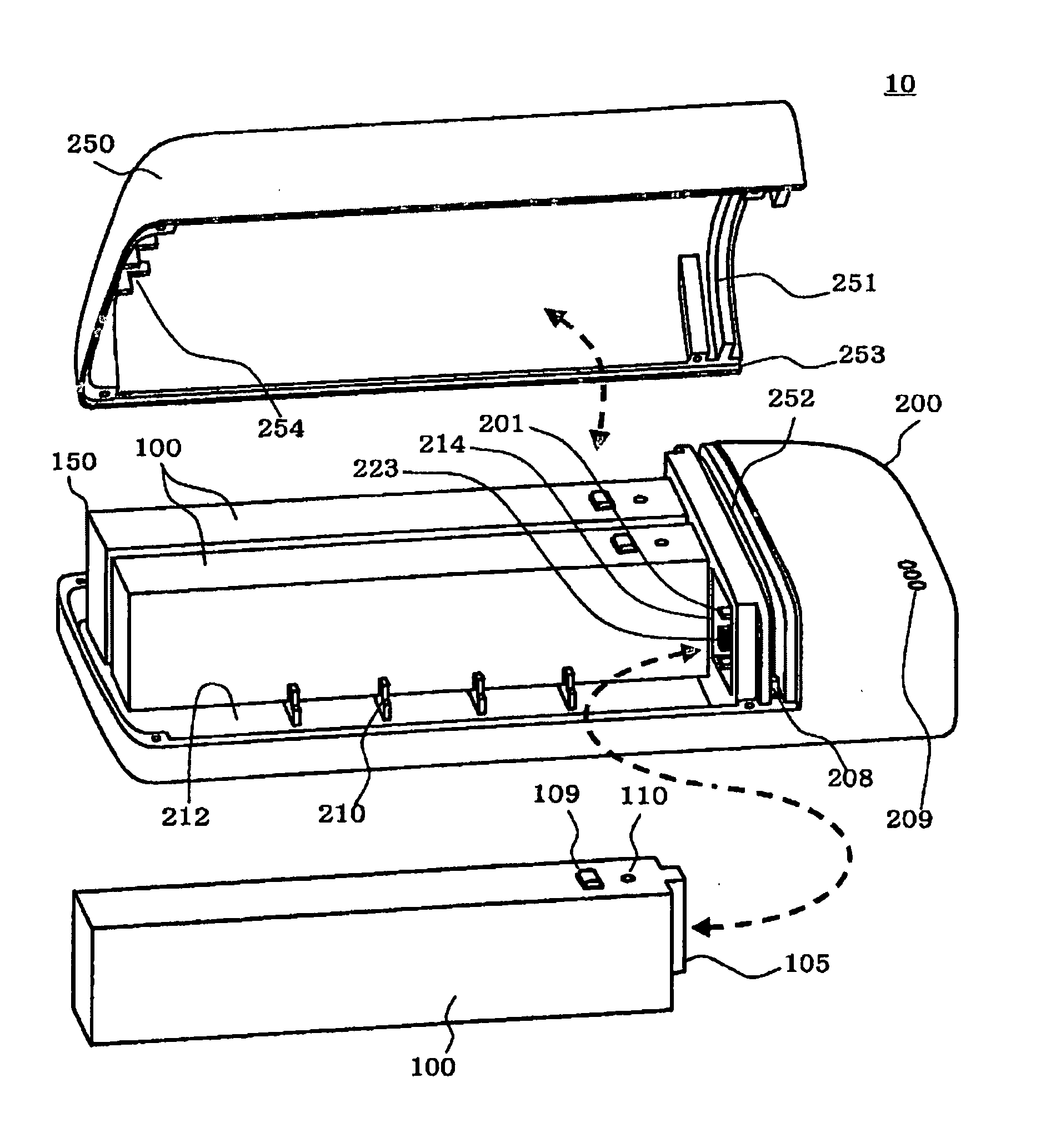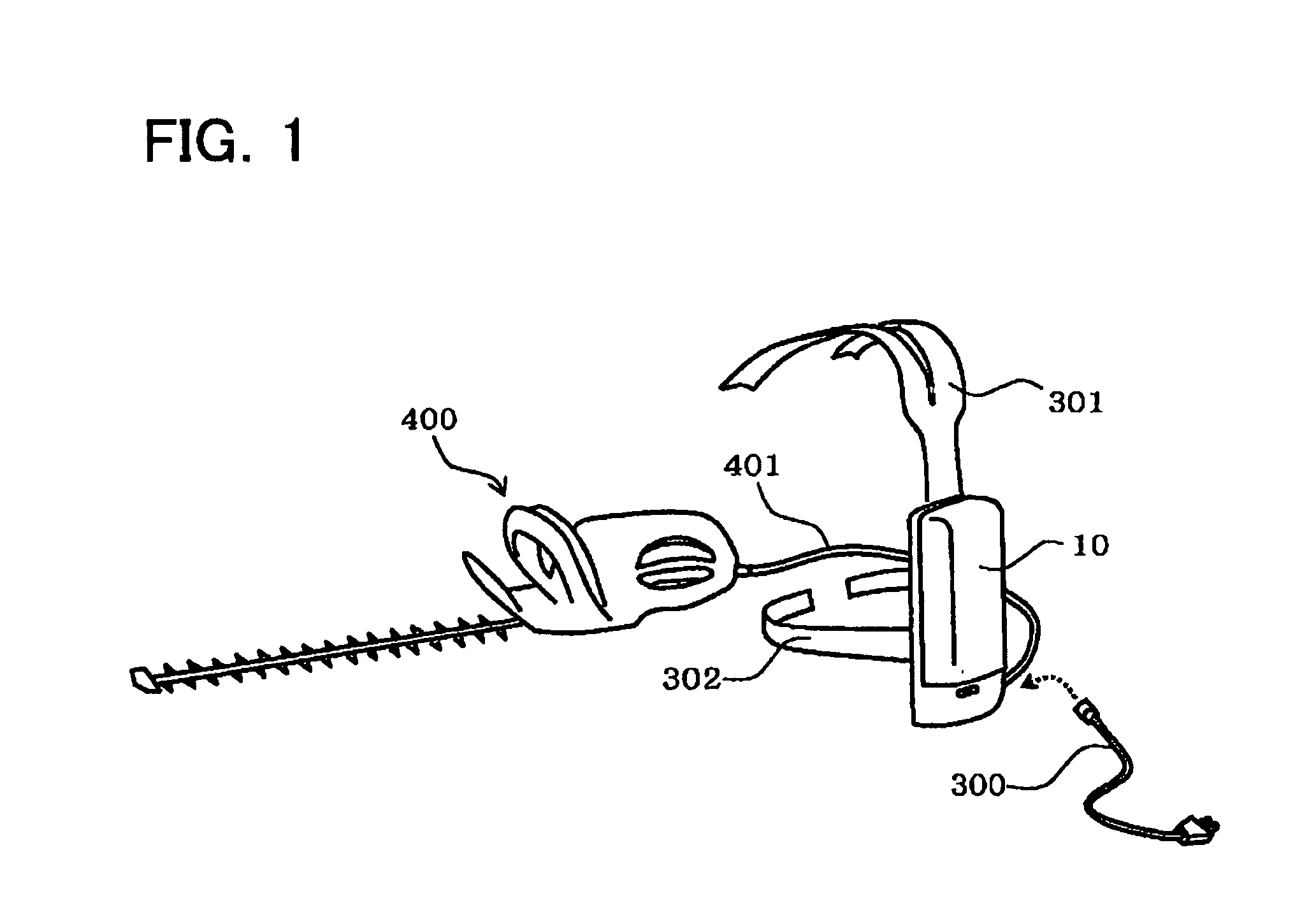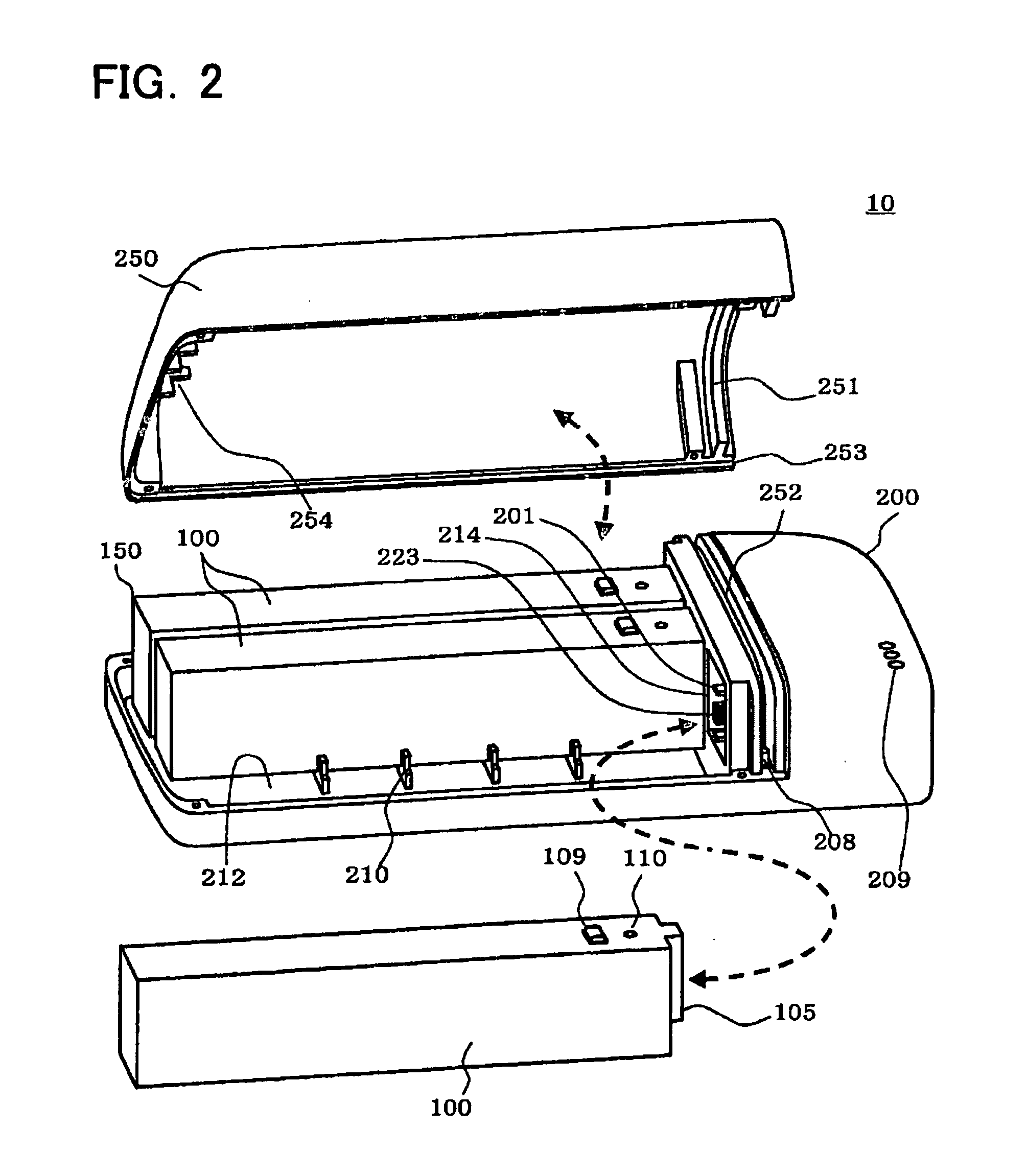Battery pack
a battery pack and battery module technology, applied in secondary cell servicing/maintenance, cell components, electrochemical generators, etc., can solve the problems of battery module damage, battery module damage, battery module damage, etc., and achieve the effect of damaging the battery module and the battery modul
- Summary
- Abstract
- Description
- Claims
- Application Information
AI Technical Summary
Benefits of technology
Problems solved by technology
Method used
Image
Examples
embodiment 1
[0054]A battery pack 10 of Embodiment 1 will be described with reference to the drawings. As shown in FIG. 1, the battery pack 10 is connected to an electric power tool 400 by a power supply cord 401, and supplies electric power to the electric power 400 as being a power source therefor. The power supply cord 401 is removable from the battery pack 10. When using the electric power tool 400, the electric power cord supply 301 is installed onto the battery pack 10, and when the electric power tool is not used, the power supply cord 401 is removed from the battery pack 10. As described below, the battery pack 10 is comprised of 30 battery cells connected in series, and has a nominal voltage of 108 volts.
[0055]Note that in FIG. 1, an electric hedge trimmer is illustrated as an example of the electric power tool 400, but the electric power tool 400 to which electric power is supplied by the battery pack 10 is not limited to a hedge trimmer. The battery pack 10 can be used as a power sour...
embodiment 3
[0186]A battery pack 30 of Embodiment 3 will be described. FIG. 15 shows an outline of the structure of the battery pack 30 of Embodiment 3. As with the battery pack 10 of Embodiment 1, the battery pack 30 is capable of being recharged, and can supply that electric power to the electric power tool 400 (omitted in FIG. 15). The battery pack 30 of Embodiment 3 has the same construction as the battery pack 10 of Embodiment 1. In addition, the same reference numbers are associated with the same structural elements found in Embodiment 1.
[0187]As shown in FIG. 15, the battery pack 30 comprises three battery modules 100, and a pack main body 200. Each battery module 100 is equipped with battery cells 101 that are connected in series (omitted in FIG. 15). The plurality of battery modules is removable from the pack main body 200, and the pack main body 200 connects the plurality of installed battery modules 100 in series. In addition, the pack main body 200 can supply electric power from the...
PUM
| Property | Measurement | Unit |
|---|---|---|
| voltage | aaaaa | aaaaa |
| voltage | aaaaa | aaaaa |
| nominal voltage | aaaaa | aaaaa |
Abstract
Description
Claims
Application Information
 Login to View More
Login to View More - R&D
- Intellectual Property
- Life Sciences
- Materials
- Tech Scout
- Unparalleled Data Quality
- Higher Quality Content
- 60% Fewer Hallucinations
Browse by: Latest US Patents, China's latest patents, Technical Efficacy Thesaurus, Application Domain, Technology Topic, Popular Technical Reports.
© 2025 PatSnap. All rights reserved.Legal|Privacy policy|Modern Slavery Act Transparency Statement|Sitemap|About US| Contact US: help@patsnap.com



